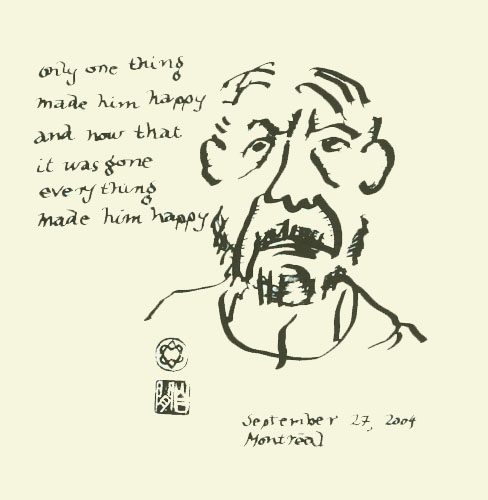Emlyn Cameron returns to the pages of Zenpundit with the first in a series of reviews of books on Fascism, the entire series forming an essay on the topic — Charles Cameron
_________________________________________________________________________
How Fascism Works: The Politics of Us and Them
by Jason Stanley
Random House, 240 pp (2018)
ISBN 978-0-525-51183-0
$26.00
Inheritors of a world we did not build, we are now
witnesses to a decline we did not foresee.
• Timothy Snyder, Road to Unfreedom
We had conceded the entire political landscape, my millennial friends and I, as terrain too treacherous to travel. But the truth was that the territory it covered was simply so staggeringly vast that we felt powerless to navigate it, let alone work it for a future yield. It intimidated us into cynicism: Politicians were serial liars, news sources couldn’t be verified without recourse to other news sources we had to verify, and even if we believed what we were told, we were simply told too much to know what deserved our attention. We needed some initial map that would help us find our way.
Like the narrator of A. E. Housman’s poem, The laws of God, the laws of man, we knew we wanted to reject the authority of leaders who “will be master, right or wrong”, or laws imposed by the foolish based on strength, but we were “stranger[s] and afraid, in a world [we] never made”. Further, in addition to being paralyzed by the scope of politics, we saw no way to escape the results of a system in which we felt incapable of participating. As we were – as with Housman’s narrator – that left only one practicable response: submission.
Luckily, just as Donald Trump raised the stakes of political participation, he inspired a body of popular scholarship on our worst apprehensions for the future.
Jason Stanley, a Yale philosophy professor, has provided a book that helps to complete this project: How Fascism Works lays bare the purpose and mechanism of much of the fascist’s intellectual shell-game.
Hanna Arendt (to whom Stanley pays tribute), Leon Trotsky, and Umberto Eco amongst others have likewise attempted to write an anatomy of fascist thought, but Stanley’s effort, in addition to being explicitly contemporary, achieves a balance of brevity, justification, and application to real world events that makes it a worthy addition to the others.
Though Eco’s 1995 essay Ur-Fascism is structurally similar to Stanley’s book and shares some of the same insights, Eco’s essay was primarily descriptive, while Stanley’s book presents the principles of fascist politics and goes on to dissect their utility to the fascist politician, in a way that Eco doesn’t manage. In essence, where Eco wrote a bird spotters guide to fascism, Stanley offers a concise ornithological textbook.
Take, for instance, the notion of traditionalism: While Eco makes the same observation as Stanley, that fascist movements sanctify the status quo and the past, Stanley drills down into a specific instance – the patriarchal family structure – and outlines why this traditional structure is a handy one for the would-be dictator: it normalizes inequality and makes commonplace a command structure analogous to the one the fascist proposes for the state – a group of people all sharing a blood bond, subservient to a single figure who acts unilaterally to guide and provide for them.
Lacking is only a greater examination of how this androcentric tendency in fascist politics does not exclude the occasional female far-right leader, such as Marine Le Pen. Stanley has said, in a New York Times opinion video, that the leader is “always a he,” which makes this outlier still more worthy of consideration. Perhaps his phrasing is meant to be taken as reflecting the truth to a first approximation, but what enables a woman to take command of a traditionally male focused cult-of-personality would add an interesting dimension to the analysis.
In addition to this, his book articulates some common fascist tendencies that go unrecorded in Eco’s essay, and which enable the reader to more effectively detect the tremors of oncoming totalitarianism. Stanley’s proposal, for instance, that sexual anxiety is central to fascist politics, seems especially salient in modern America (where gender identity is a high-profile point of division between conservatives and liberals) and with reference to contemporary Russia (where Putin’s public addresses make use of homophobic and transphobic rhetoric).
Stanley argues that singling out minorities who challenge traditional sexual and gender norms is efficacious for the fascist, as it both moves to eliminate archetypes for social relationships alternative to the patriarchal model favored by fascists, and enables the first of many oblique attacks on the principle of free expression without directly assailing democratic platitudes. Stanley also manages to tie this to the fascist tendency to decry cities, usually hubs of the attacked minorities, as dens of iniquity, and the rhetorical correlation of the out group with rape and the destruction of mythical purity. Having done this, Stanley is able to identify attacks on sexual minorities as “perhaps the most vivid” of the canaries to eye as leaders draw us further and further into the proverbial coal mine.
The book also offers some interesting discussion of the fascist relationship to truth. In addition to the commonplace insight that fascists lie about the past to create a triumphant nationalist mythology, Stanley argues that the fascist, having spread lies about the laziness and treacherousness of their chosen enemy, also seeks to use policy to so brutalize their victims that the malnourished and abused minority population comes to resemble the abject figures of fascist propaganda, reducing reality to the “truth” that fascists had all along maintained; that the fascist first produces lies to debase the certainty of anything, and then manufactures their “truths”.
It is a book at once enlightening and useful to those looking for some through-line to the news of the day. Learning, per the BBC, that Citizenship and Immigration Services’ acting head has defended an administration move to cut public aid to legal migrants by saying “No one has a right to become an American who isn’t born here as an American” unless they can “be self-sufficient […] as in the American tradition”, a reader of Stanley’s book might take pause and recall a passage that runs “In fascism, the state is an enemy; it is to be replaced by the nation, which consists of self-sufficient individuals who collectively choose to sacrifice for a common goal of ethnic or religious glorification.”
Having seen such an article, and taken such a moment of reflection, the reader may decide they see nothing ominous in this correlation. Even so, how salutary many such reflective pauses could prove to be to the national character, and how much easier they become when so able a teacher has given us an idea of when to take them. And in providing ways of recognizing and describing fascist politics, Stanley’s book sharpens the usefulness of other books tackling similar projects.
It might be said that the interplay of those tactics Stanley has described in his book, and the effective responses Stanley’s Yale colleague Timothy Snyder enumerated in his book, On Tyranny, are the two forces that animate the events in perhaps the most ambitious of these other recent works: Snyder’s The Road to Unfreedom (to which I will to return). But, even if not taken as a mandatory supplement to either of Snyder’s works, Stanley’s book substantially enhances and reinforces the lessons of the other two, and vice versa.
Together, they may provide the confidence necessary to uncertain voters, especially among the young, to discard what Mark Fisher called “reflexive impotence” (and the cynicism that guards it) and become educated participants in our politics. If these authors manage it, they will deserve credit and status alongside those offered to the analysts and thinkers to whom they refer in their own work, and those of us so armed may just find ourselves alive to solutions beyond simple concession.










